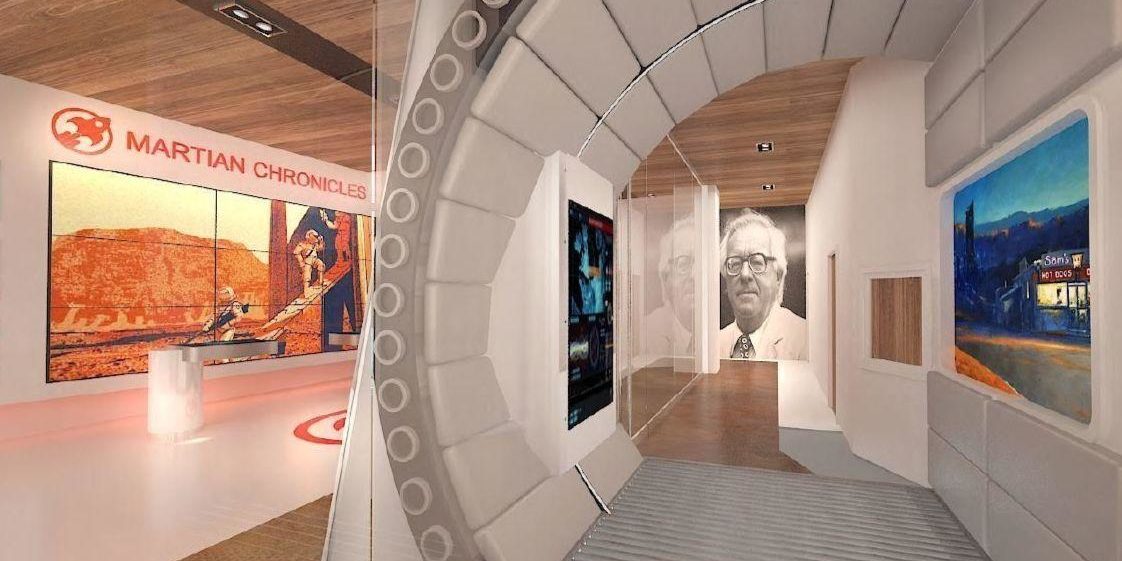Themed around the Waukegan-born author’s “Martian Chronicles,” the room will allow visitors to explore the concepts of space, time travel and “the limits of human endeavor,” Petroshius said.
An adjustable periscope could use augmented reality to transform the view of Genesee Street beyond the front windows into Mars or another vista.
A sphere in the center of the room could show the surface of Mars, Earth or the planet of the aliens that appear in the story “The Fire Balloons” and glow with blue flames in crystal spheres. Also, using tablets, visitors can explore the stories of the “Martian Chronicles.”
Design work on a room dedicated to “Fahrenheit 451” just began this past week, Petroshius said. The room will examine freedom of expression, censorship and creativity, as well as Bradbury’s experiences being investigated by the FBI during the McCarthy era
The goal is to appeal to grown-ups who are already fans of Bradbury as well as students who haven’t yet been exposed to his work, said Keith Michalek, a senior designer with Chicago Exhibit Productions Inc., the firm behind the renderings.
The modular nature of the proposed museum would make it easier for its exhibits to be moved to the Carnegie Library on Sheridan Road should that become a renewed option, said Michalek, who became interested in the project in large part because of the 115-year-old former public library.
Organizers decided to go with another location — the first floor of the Greater Waukegan Development Coalition’s space at 13 N. Genesee St. — because getting a museum up and running in addition to the renovating the Carnegie Library was proving too much to do all at once, Petroshius said.
The changeable exhibits will also ensure that the museum remains fresh for repeat visitors and allows the exhibit to present the perspectives of different characters, Michalek said. The plan is to create an experiential museum, which centers less on artifacts and more on the ideas Bradbury explored in his work, he said.
“What Ray’s gift was to the world was the content of his stories,” Michalek said.
Bradbury’s typewriter and several manuscripts were donated to Indiana University-Purdue University Indianapolis, which houses the Center for Ray Bradbury Studies. Petroshius described the university’s museum as more geared for academics.
His home in Los Angeles — where he lived for 50 years — has since been demolished. The California city, where Bradbury moved to with his family at the age of 13, does not have a museum dedicated to Bradbury.
“This is a long overdue museum that belongs in ‘Green Town,’ in Waukegan,” Petroshius said, referencing the fictional town in the book “Dandelion Wine” that is based on Waukegan.
The planning — including the initial renderings, the designs and business plan — will help the museum make its case to potential donors, Petroshius said. The goal is to have the museum completely open by the 100th anniversary of Bradbury’s birth in August 2020.
“I think that the most important thing is the fact that we’ve developed our concept; we’ve developed the floor plans,” she said. “You can’t go out and fundraise until you have your story, and your concept, and a number of significant partners.”
The final cost of the project is still in the works, but Petroshius said the figure is expected to be more than a million dollars to get the museum completely up and running. Organizers are pursuing a mix of grants, large donors and smaller individual donations.
The museum’s ongoing operations would be funded through a combination of admissions and donations, she said.









